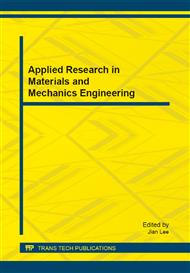p.83
p.89
p.95
p.101
p.107
p.113
p.120
p.124
p.130
Numerical Analysis and Optimization of Flat Ends Parameters in Pressure Vessels with Rectangular Shape
Abstract:
Cylindrical pressure vessels with circular cross section are commonly used in the construction of various pressure apparatus; however in certain cases other cross sections are applied. The vessels with rectangular and elliptical perpendicular cross section are of the main interest and certain formulas for their calculations are stated in the respective codes [1, 2]. In these appliances flat ends of various shapes are usually used as the vessels caps. Similarly, as for the cylindrical boilers, flat end plates with stress relieve grooves are recommended. Like in the flat ends for cylindrical pipes certain variation of the groove parameters is possible but again no clear suggestion is given how to choose the optimal groove parameters providing the minimum stress concentration [3]. In this paper the numerical analysis and optimization of the admitted by code [1] groove parameters is presented for the pipe with the rectangular cross section subjected to the internal pressure.
Info:
Periodical:
Pages:
107-112
Citation:
Online since:
August 2014
Authors:
Price:
Сopyright:
© 2014 Trans Tech Publications Ltd. All Rights Reserved
Share:
Citation:


